Discover 35 hidden attractions, cool sights, and unusual things to do in New Taipei City (Taiwan). Don't miss out on these must-see attractions: National Palace Museum, Chiang Kai-shek Memorial Hall, and Taipei 101. Also, be sure to include Ximending in your itinerary.
Below, you can find the list of the most amazing places you should visit in New Taipei City (New Taipei).
Table of Contents
National Palace Museum
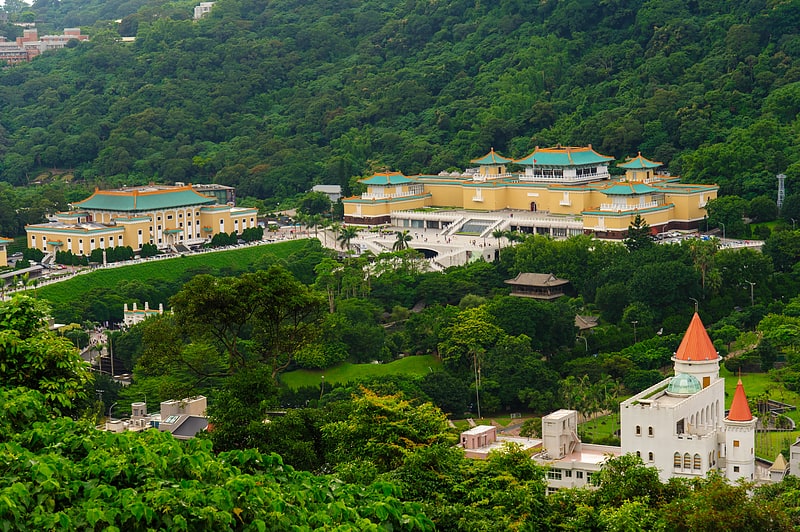
Also known as: 國立故宮博物院
Museum in Taipei, Taiwan. The National Palace Museum, located in Taipei, Taiwan, has a permanent collection of nearly 700,000 pieces of Chinese artifacts and artworks, making it one of the largest of its type in the world. The collection encompasses items spanning 8,000 years of Chinese history from the neolithic age to the modern period. Most of the collection are high quality pieces collected by Chinese emperors. The National Palace Museum shares its roots with the Palace Museum in the Forbidden City of Beijing, whose extensive collection of artwork and artifacts were built upon the imperial collections of the Ming and Qing dynasties.[1]
Address: No. 221, Sec 2, Zhi Shan Rd, 111 Shilin District (士林区)
Chiang Kai-shek Memorial Hall
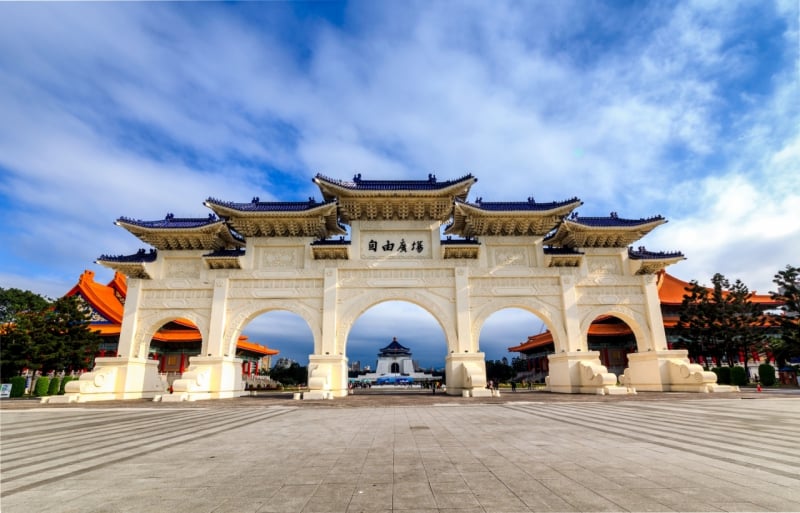
Also known as: 中正紀念堂
Cultural landmark in Taipei, Taiwan. The National Chiang Kai-shek Memorial Hall is a national monument, landmark and tourist attraction erected in memory of Generalissimo Chiang Kai-shek, former President of the Republic of China. It is located in Taipei.
The monument, surrounded by a park, stands at the east end of Memorial Hall Square. It is flanked on the north and south by the National Theater and National Concert Hall.[2]
Address: 21 Chung-Shan S Rd, New Taipei City (中正区)
Taipei 101
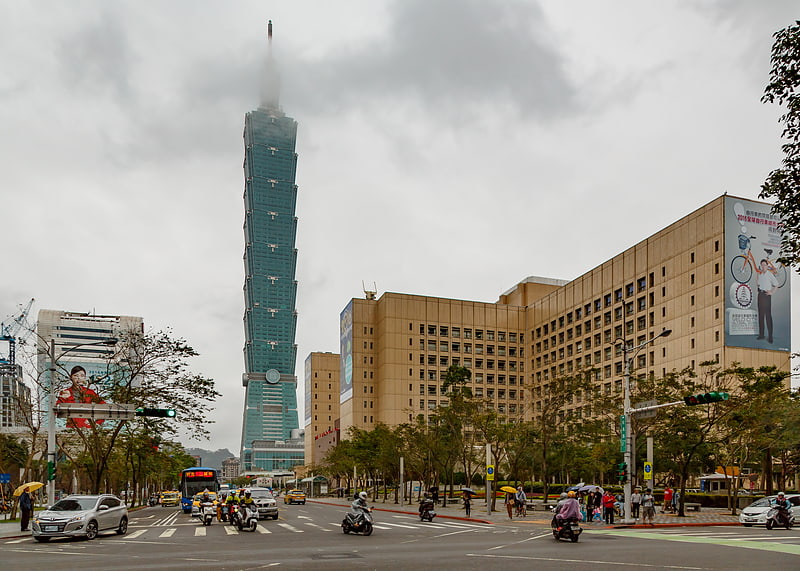
Also known as: 台北101
Skyscraper in Taipei, Taiwan. Taipei 101, formerly known as the Taipei World Financial Center, is a skyscraper in Taipei, Taiwan. This building was officially classified as the world's tallest from its opening in 2004 until the 2009 completion of the Burj Khalifa in Dubai, UAE. Upon completion, it became the world's first skyscraper to exceed a height of half a kilometer.
The elevators that transport passengers from the 5th to the 89th floor in 37 seconds (attaining 60.6 km/h (37.7 mph)) set speed records. In 2011 Taipei 101 received a Platinum rating under the LEED certification system, becoming the tallest and largest green building in the world. The structure regularly appears as an icon of Taipei in international media, and the Taipei 101 fireworks displays are a regular feature of New Year's Eve broadcasts.
Taipei 101's postmodernist architectural style evokes traditional Asian aesthetics in a modern structure employing industrial materials. Its design incorporates a number of features that enable the structure to withstand the Pacific Ring of Fire's earthquakes and the region's tropical storms. The tower houses offices, restaurants, and indoor and outdoor observatories. The tower is adjoined by a multilevel shopping mall that has the world's largest ruyi symbol as an exterior feature.
Taipei 101 is owned by Taipei Financial Center Corporation. The skyscraper opened on 31 December 2004 to celebrate New Year's Eve.[3]
Address: New Taipei City, No. 7, Section 5, Xinyi Road, Xinyi District
Ximending
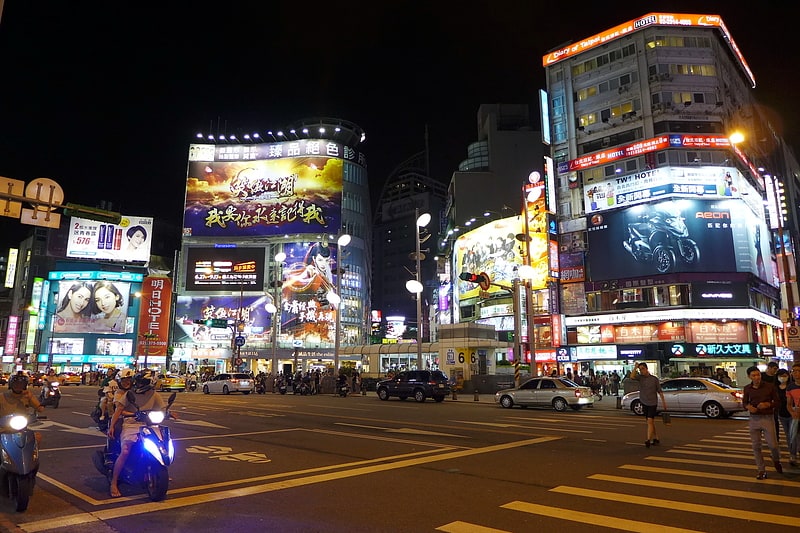
Also known as: 西門町
Ximending is a neighborhood and shopping district in the Wanhua District of Taipei, Taiwan, along with its main rival, the Eastern District of Taipei.[4]
Address: Wanhua District, 108 New Taipei City (万华区)
Taipei Fine Arts Museum
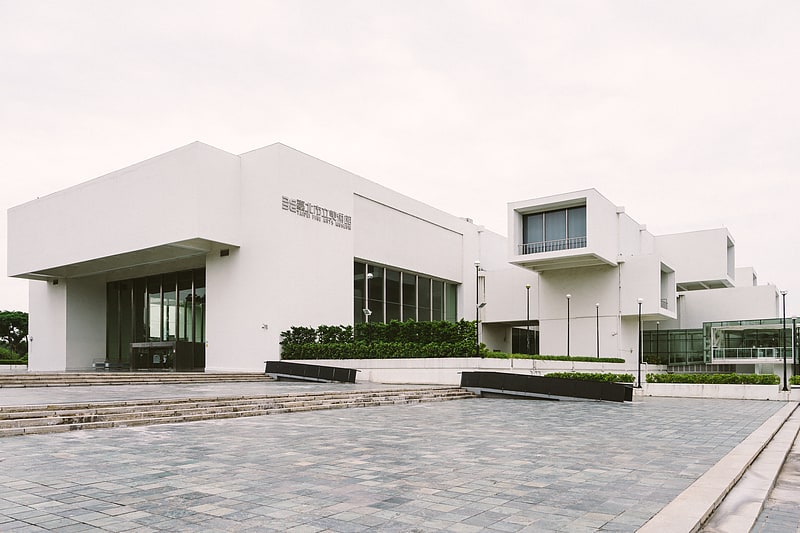
Also known as: 臺北市立美術館
Museum in Taipei, Taiwan. The Taipei Fine Arts Museum is a museum in Zhongshan District, Taipei, Taiwan. It is in the Taipei Expo Park. The museum first opened on August 8, 1983, at the former site of the United States Taiwan Defense Command. It was the first museum in Taiwan built for contemporary art exhibitions. The architecture is a local interpretation of the Japanese Metabolist Movement, and the building was designed by architect Kao Er-Pan.[5]
Address: No. 181號, Section 3, Zhongshan N Rd, 10461 Zhongshan District (中山区)
Sun Yat-sen Memorial Hall

Also known as: 國立國父紀念館
Cultural landmark in Taipei, Taiwan. The National Sun Yat-sen Memorial Hall is located in Xinyi District, Taipei, Taiwan. It is a memorial to the Republic of China's National Father, Dr. Sun Yat-sen, and was completed in 1972. The total building area covers 29,464 square metres in an open space of 115,000 square metres. It contains displays of Sun's life and the revolution he led, and is also a multi-purpose social, educational and cultural center for the public.[6]
Address: No.505 Section 4, Ren'ai Road, Sungshung District, New Taipei City (信义区)
New Taipei City Yingge Ceramics Museum
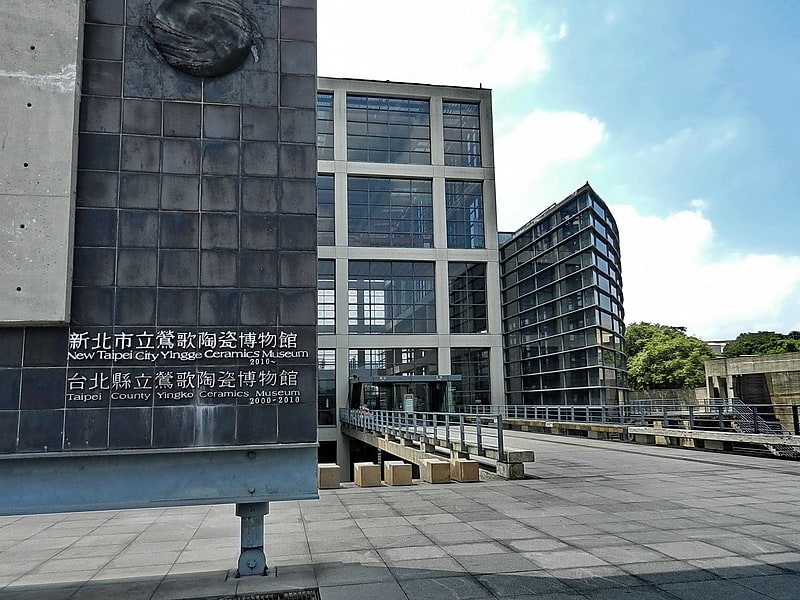
Also known as: 新北市立鶯歌陶瓷博物館
Museum in Taiwan. The New Taipei City Yingge Ceramics Museum is a museum presenting ceramics located in Yingge District, New Taipei, Taiwan.[7]
Address: No. 200號, Wenhua Road, 239 Yingge District
Taipei Zoo

Also known as: 臺北市立動物園
Zoo in Taipei, Taiwan. The Taipei Zoo, sometimes referred to as the "Muzha Zoo", is a public zoological garden in Wenshan District, Taipei, Taiwan. It is the most famous zoological garden in Taiwan and a leader in conservation, research and education, and recreation. It is one of the largest zoos in Asia, with a total area of 165 hectares, of which more than 90 ha are developed.[8]
Address: No. 30號, Section 2, Xinguang Road, 11656 Wenshan District (文山地区)
Yehliu Ocean World
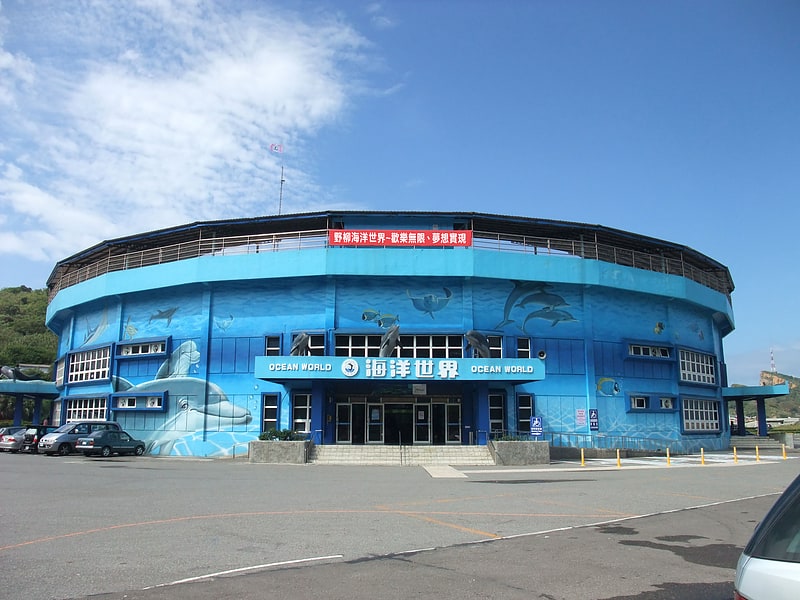
Also known as: 野柳海洋世界
Aquarium in New Taipei City, Taiwan. The Yehliu Ocean World is an oceanarium in Yehliu Village, Wanli District, New Taipei, Taiwan.[9]
Address: No. 167-3號, Gangdong Road, 207 Wanli District
National Taiwan Science Education Center
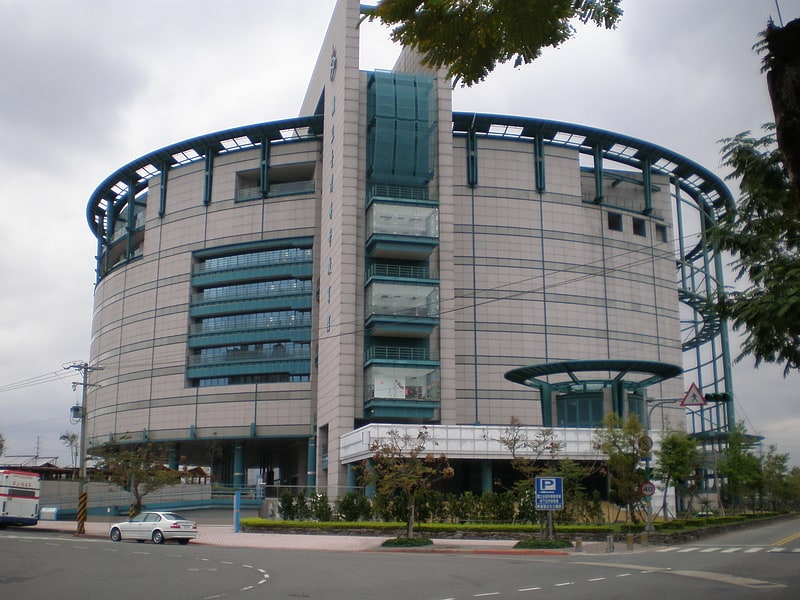
Also known as: 國立臺灣科學教育館
Science museum in Taipei, Taiwan. The National Taiwan Science Education Center is an educational center in Shilin District, Taipei, Taiwan. The mission of the center is to promote the teaching of applied science throughout Taiwan.[10]
Address: No. 189號, Shishang Road, 111 Shilin District (士林区)
National Taiwan Museum
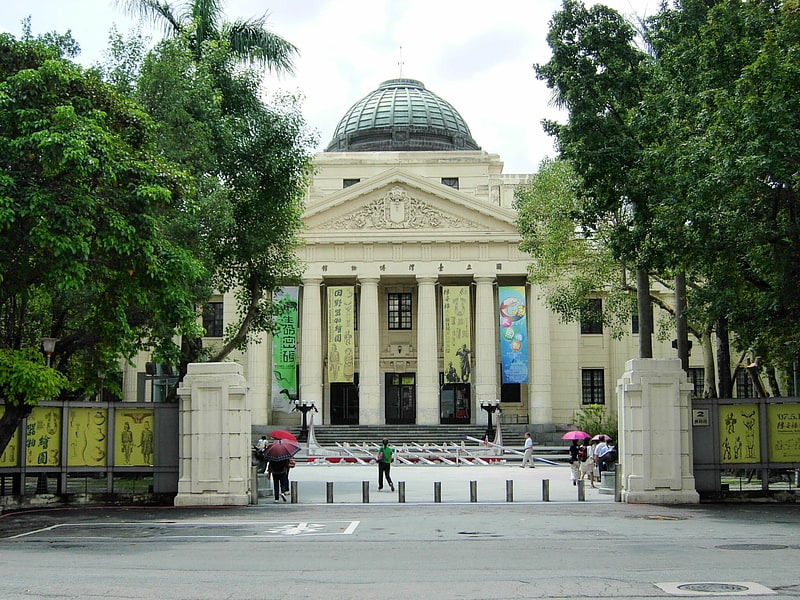
Also known as: 國立臺灣博物館
Museum in Taipei, Taiwan. The National Taiwan Museum, established in 1908, is the oldest museum in Taiwan. It was founded by the colonial government during Taiwan's period of Japanese rule. The museum is located in Zhongzheng District, Taipei.[11]
Address: No.2 Xiangyang Road, Zhongzheng District, New Taipei City (中正区)
National Theatre
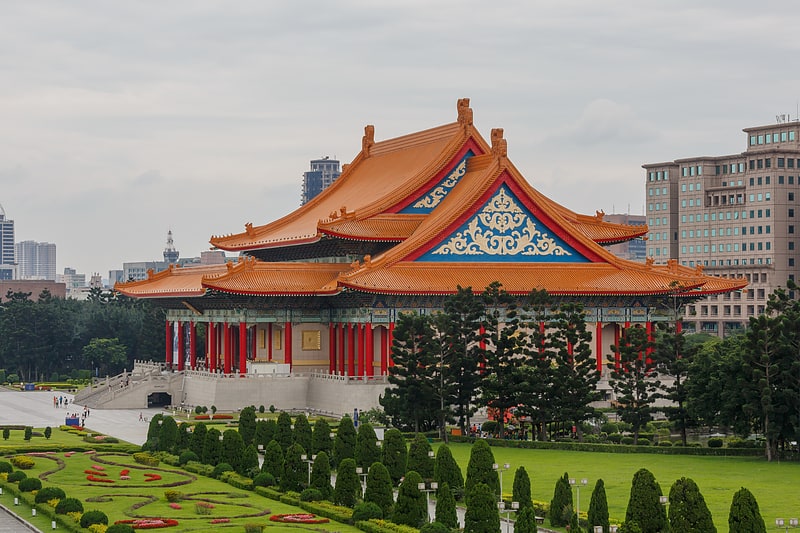
Also known as: 國家兩廳院
Building complex. The National Theater and National Concert Hall are twin performing arts venues at Liberty Square in Zhongzheng District, Taipei, Taiwan. Completed in 1987, the landmarks stand on the south and north sides of the square with Chiang Kai-shek Memorial Hall to the east. Together the venues are referred to by the abbreviation NTCH. The square itself sits near Ketagalan Boulevard, site of the Presidential Office Building, the National Central Library, the National Taiwan Museum, and the 228 Peace Memorial Park.[12]
Address: New Taipei City, 10048 Chung-Shan South Road
Golden Waterfall
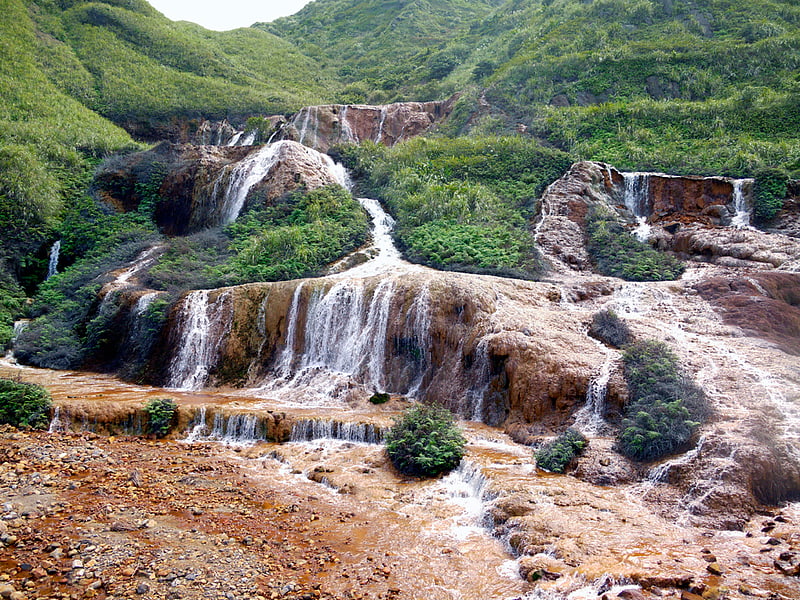
Tourist attraction in New Taipei City, Taiwan. The Golden Waterfall is a waterfall located near a village named Jiufen in Ruifang District, New Taipei, Taiwan.[13]
Address: Jinguashi village, Ruifang District, New Taipei City
Lin Family Mansion and Garden
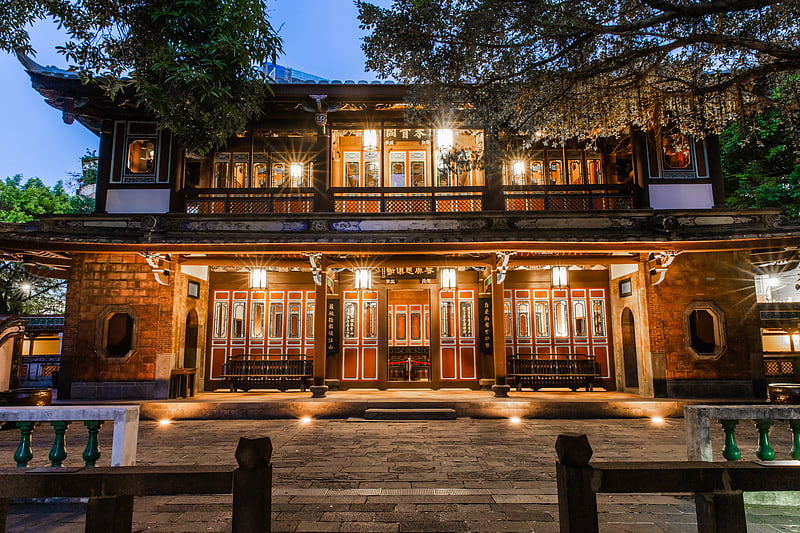
Also known as: 林本源園邸
Heritage building in Taiwan. The Lin Ben Yuan Family Mansion and Garden in Banqiao District, New Taipei City, Taiwan was a residence built by the Lin Ben Yuan family. It is Taiwan's most complete surviving example of traditional Chinese garden architecture. The Lin Family Mansion and Garden — along with the Tainan Wu Garden, Hsinchu Beiguo Garden, and Wufeng Lin Family Mansion and Garden — are collectively known as the Four Great Gardens of Taiwan. This residence can be traced back to 1847, at the time a "rent house" for the Lin Ben Yuan family in the north. It was later expanded by the brothers Lin Guohua and Lin Guofang, becoming the residence of the Lin Ben Yuan family. Currently, the Lin Family Mansion and Garden is under the joint responsibility of the Executive Yuan Cultural Construction Committee, Ministry of the Interior, Ministry of Transportation and Communications Tourism Bureau, Taiwan Provincial Government, and the New Taipei City Government for protection and restoration work, who have additionally designated it as a Class-2 Historical Site.
The Lin Family Mansion and Garden has a surface area of approximately 20,000 square metres (4.9 acres). The garden is also referred to as the Banqiao Lin Family Garden (板橋林家花園). The Three-Courtyard Mansion to the west of the garden belongs to the Lin Family Sacrificial Trade Association. It is necessary to have a tour guide lead to enter the mansion's interior.[14]
Address: No.9, Ximen St., Bianqiao District, 22056 New Taipei City
Fort San Domingo
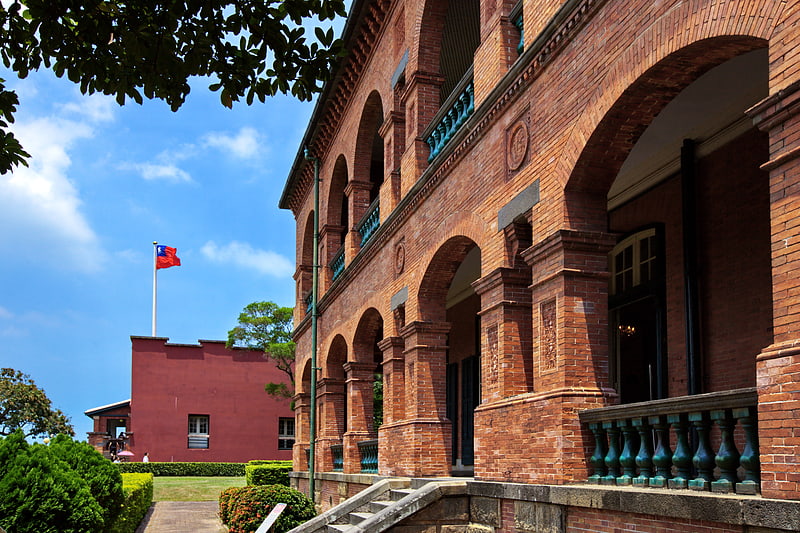
Also known as: 紅毛城
Historical landmark in New Taipei City, Taiwan. Fort Santo Domingo is a historical fortress in Tamsui District, New Taipei, Taiwan. It was originally a wooden fort built in 1628 by the Spanish Empire, who named it "Fort Santo Domingo". However, the fort was then destroyed by the Spanish themselves, after losing the Second Battle of San Salvador to the Dutch Empire in 1642. After the battle, in 1644, the Dutch rebuilt a fort in the original site and renamed it "Fort Antonio". Since the Dutch were called "Red-haired People" by the Han immigrants during the time, the fort was then nicknamed "Fort Red Hair"..
In 1724, the Qing Government repaired the fort, and built a perimeter wall with four gates. From 1868 onwards the fort was leased to the British government as its consulate, and a new two-storey building was built nearby as the consul's residence. The fort continued to be used as a British consulate during Japanese rule, but was briefly closed during the Pacific War.
After the war, it was returned to British control. The site was used as an unofficial British embassy until 1972, though official diplomatic relations between Republic of China (Taiwan) and the United Kingdom were terminated in 1950. Afterwards the fort was temporarily managed by Australia and the United States of America, before the fort was returned to the government of Republic of China (Taiwan) in 1980. Since then, the fort has been a National Historical Site, open to tourists and archaeologists alike.
The site of Fort San Domingo includes the main fortress, the former British consul's residence, and the south gate built during Qing dynasty. Among the architectures, the main fortress is one of the oldest buildings on the whole island, and there were four cannons placed in the front of the fortress, which could be traced back to Jiaqing era. The former British consul's residence is on the east side of the main fortress, and is a two-storey English-style building. The south gate is the only Chinese style architecture among all the buildings, and is made from Guangin Stones.
Fort San Domingo is located near Hobe Fort, which was built during the late Qing era.[15]
Address: No.1, Lane 28, Zhongzheng Road,Danshuei District, 25158 New Taipei City
228 Peace Memorial Park
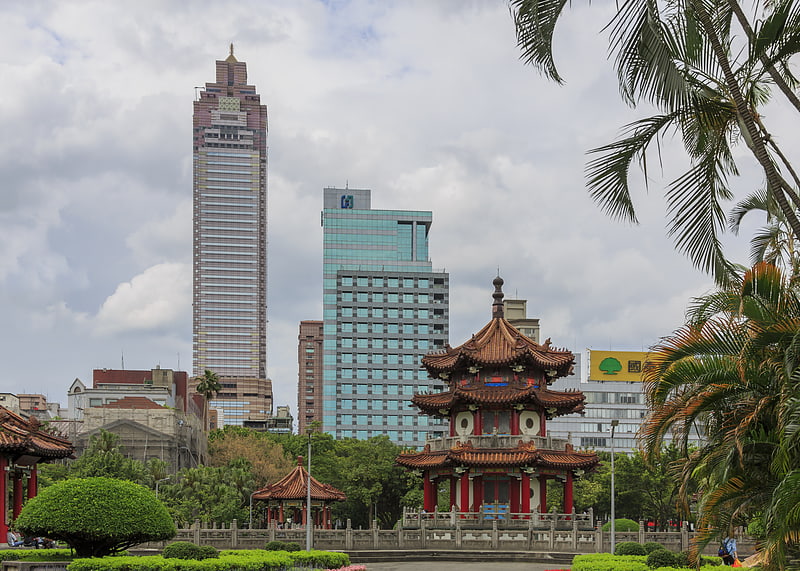
Also known as: 二二八和平紀念公園
Park in Taipei, Taiwan. The 228 Peace Memorial Park is a historic site and municipal park located at 3 Ketagalan Boulevard, Zhongzheng District, Taipei, Taiwan. The park contains memorials to victims of the February 28 Incident of 1947, including the 228 Memorial Monument that stands at the center of the park and the Taipei 228 Memorial Museum, housed at the site of a former radio station that operated under Japanese and Kuomintang rule. The National Taiwan Museum stands at the park's north entrance. The park also has a bandshell and exercise areas.[16]
Address: No.3 Ketagalan Blvd., Zhongzheng Dist, New Taipei City (中正区)
Miramar Entertainment Park
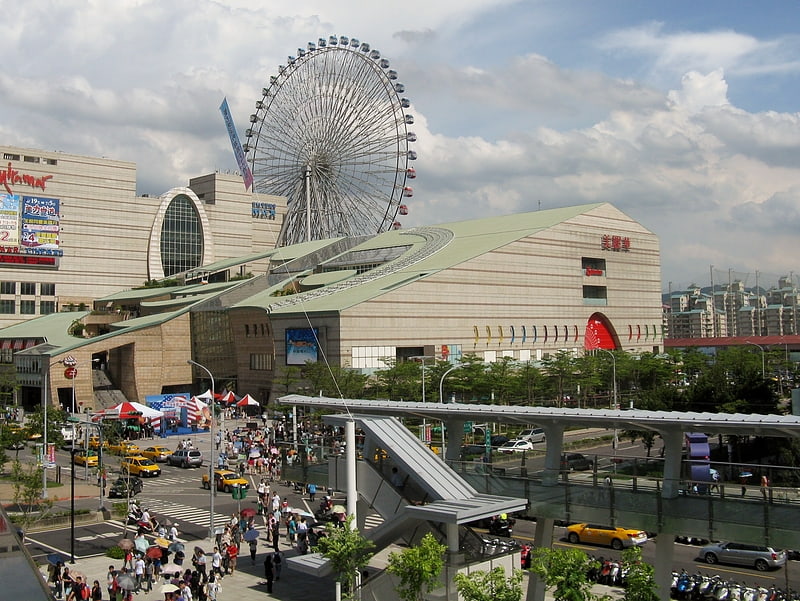
Also known as: 美麗華百樂園
Shopping mall in Taipei, Taiwan. Miramar Entertainment Park is a shopping mall located in the Dazhi area in Zhongshan District of Taipei, Taiwan.
The shopping mall contains an IMAX theater. With 28m × 21m dimensions, its movie screen is the largest in Asia for screening commercial films.[17]
Address: No.20 Jingyuesan Road, Zhongshan District, 104 New Taipei City (中山区)
Taipei Guest House

Also known as: 臺北賓館
Heritage building in Taipei, Taiwan. The Taipei Guest House is the historical building located at 1 Ketagalan Boulevard, Bo'ai Special Zone, Zhongzheng District, Taipei, Taiwan. It is owned by the Government of the Republic of China and used as a state guest house for receiving state guests or celebration activities.[18]
Address: No.1, Ketagalan Boulevard, 100 New Taipei City (中正区)
Shihsanhang Museum of Archaeology
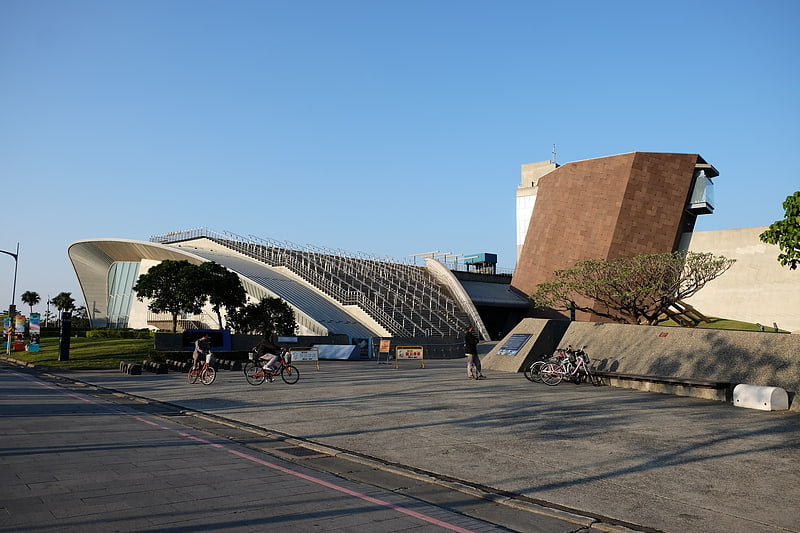
Also known as: 新北市立十三行博物館
Museum in Taiwan. The 13th Site Museum of Archaeology is an archaeological museum in Bali District, New Taipei, Taiwan. The museum conserves and displays artifacts from the 13th archaeological site.[19]
Address: No. 200 Museum Rd., Bali Dist, New Taipei City
Shifen Waterfall
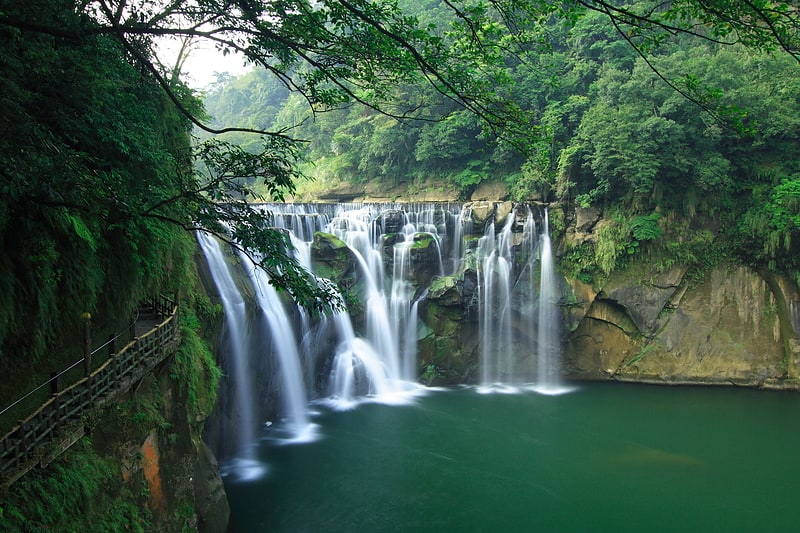
Also known as: 十分瀑布
Waterfall in Taiwan. Shifen Waterfall is a scenic waterfall located in Pingxi District, New Taipei City, Taiwan, on the upper reaches of the Keelung River. The falls' total height is 20 metres and 40 metres in width, making it the broadest waterfall in Taiwan. It is a cascade waterfall in which the water flows in one direction and the rock is sloped in the opposite.[20]
Address: No.10 Gankeng Road, Nanshan Village, Pingxi District, 226 New Taipei City
National Revolutionary Martyrs' Shrine
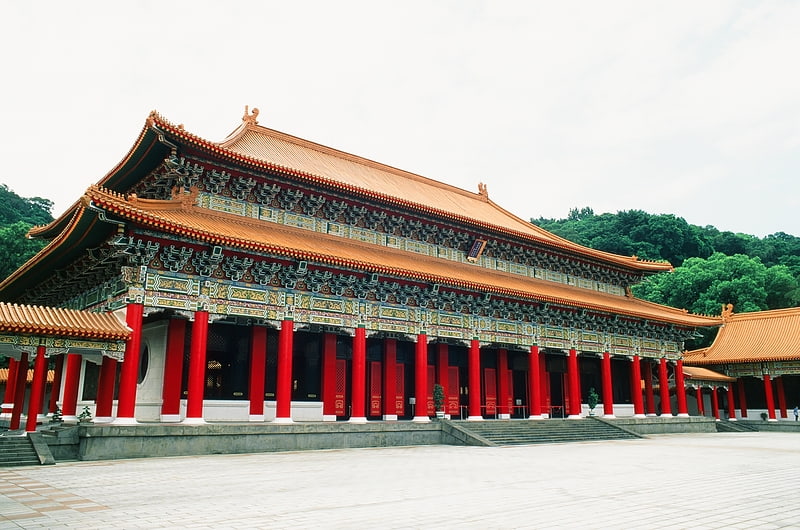
Also known as: 國民革命忠烈祠
Historical place in Taipei, Taiwan. The National Revolutionary Martyrs' Shrine is a shrine in Zhongshan District, Taipei, Taiwan, dedicated to the war dead of the Republic of China.
Built on Chingshan Mountain and overseeing the Keelung River in Taipei's Zhongshan District in 1969, the Martyrs' Shrine recalls the architecture of the Hall of Supreme Harmony in Beijing's Forbidden City. The structure houses the spirit tablets of about 390,000 persons killed, among other engagements, during the Xinhai Revolution, Northern Expedition, Second Sino-Japanese War, Chinese Civil War, and the First and Second Taiwan Strait Crises. A changing of the honor guard from the various branches of the Republic of China Military, similar to the rituals at the Sun Yat-sen Memorial Hall and Chiang Kai-shek Memorial Hall, take place at the shrine.
The Martyrs' Shrine was the site of the funeral of Chiang Ching-kuo in 1988. On March 29 and September 3 of every year the President of the Republic of China leads the heads of the five Yuans to pay their respects to the martyrs by bowing and offering incense. Similar shrines are located in each locality in Taiwan, and similar ceremonies are led by county magistrates and city mayors.
Although the Martyrs' Shrine is located in Taiwan, most of the soldiers were born in mainland China. Taiwan was ruled by Japan throughout World War II, and about 200,000 Taiwanese who lived under Japanese rule served in the Japanese Imperial Army.[21]
Address: No.139 Bei'an Road, 111 New Taipei City (中山区)
National Museum of History
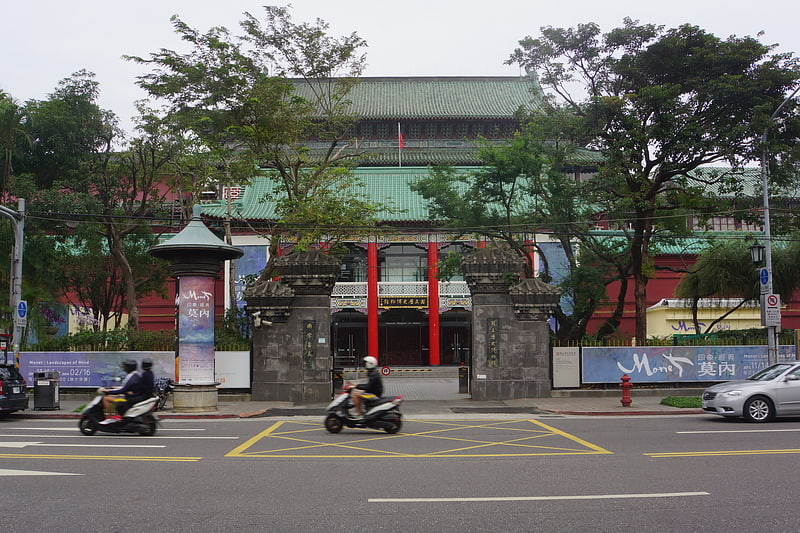
Also known as: 國立歷史博物館
Museum in Taipei, Taiwan. The National Museum of History is located in the Nanhai Academy in Zhongzheng District, Taipei, Taiwan. After the Republic of China government moved to Taiwan, the National Museum of History was the first museum to be established in Taiwan.[22]
Address: No.49 Nanhai Road, 100 New Taipei City (中正区)
Taipei Story House
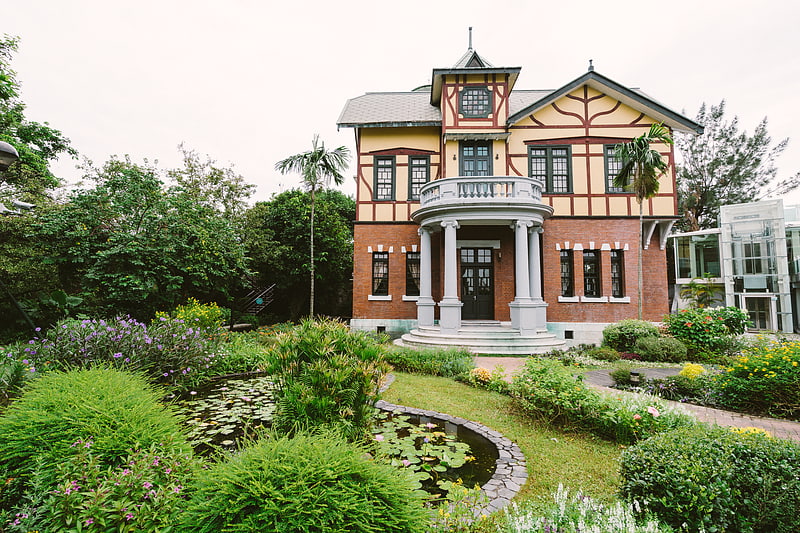
Also known as: 台北故事館
Museum in Taipei, Taiwan. The Taipei Story House, formerly known as the Yuanshan Mansion, is a historic house in the Zhongshan District, Taipei, Taiwan. It is now open as a museum in Taipei Expo Park.[23]
Address: No.181-1, Sec. 3, Zhongshan N. Road, New Taipei City (中山区)
Dalongdong Baoan Temple

Also known as: 大龍峒保安宮
Place of worship in Taipei, Taiwan. Dalongdong Baoan Temple also known as the Taipei Baoan Temple is a Taiwanese folk religion temple built in the Datong District, Taipei, Taiwan. The present temple was originally built by clan members in Tong'an, Xiamen, Fujian, who immigrated to Taipei in the early 19th century and gave the temple the name Po-an in order to "protect those of Tong'an". The Taipei Confucius Temple is located adjacent to the Baoan Temple.[24]
Address: 61 Hami St.,Taipei City, New Taipei City (大同区)
Xingtian Temple
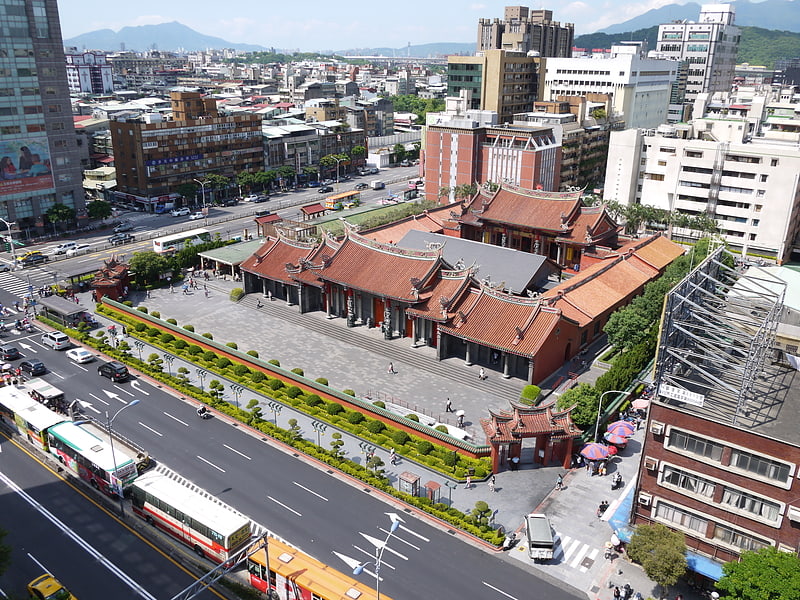
Also known as: 行天宮
Temple in Taipei, Taiwan. Xingtian Temple is a popular temple in Zhongshan District, Taipei, Taiwan. This temple is devoted to Lord Guan, the Patron Deity of businessmen, military personnel and policeman. This temple is situated on a street corner near the center of the city. Sculptures of dragons feature prominently in this temple's design. It covers over 7,000 square meters.[25]
Address: No.109 Er Section, Minquan East Road, New Taipei City (中山区)
Wulai Waterfall
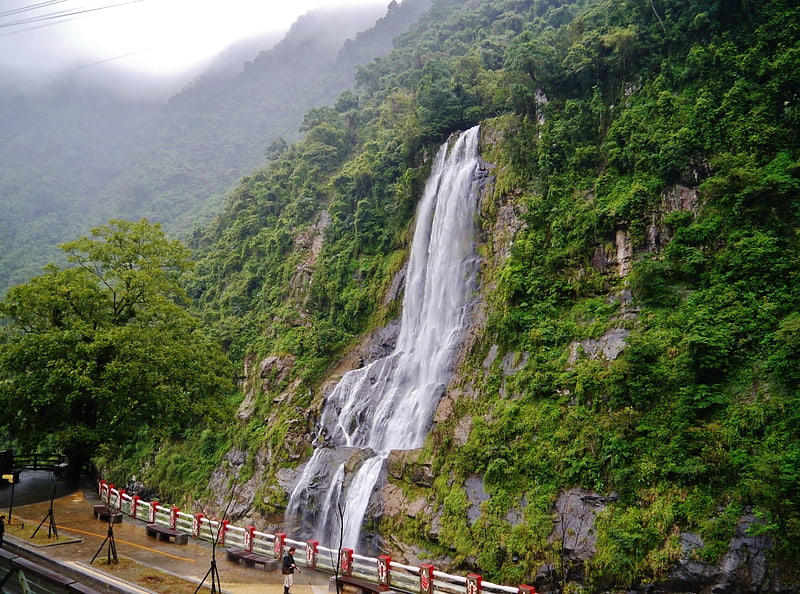
Also known as: 烏來瀑布
Waterfall in Taiwan. The Wulai Waterfall is a waterfall in Wulai District, New Taipei, Taiwan.[26]
Gold Museum
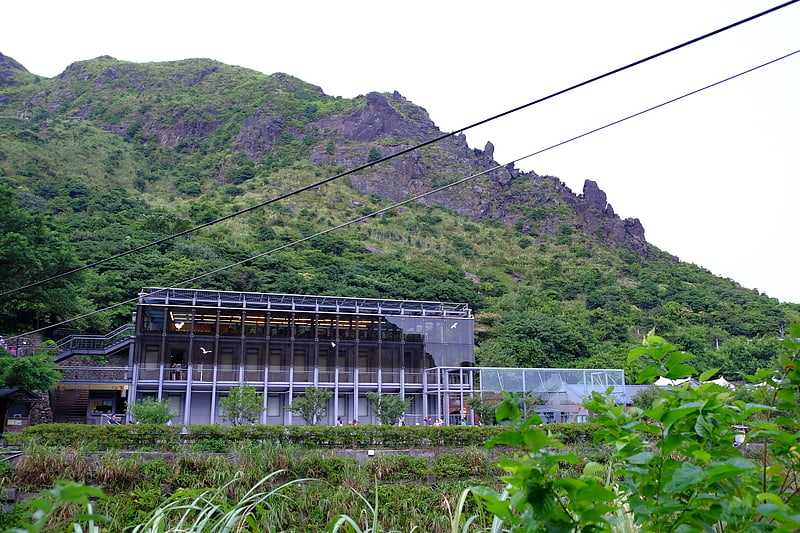
Also known as: 新北市立黃金博物館
Museum in New Taipei City, Taiwan. The New Taipei City Gold Museum, formerly known as the Gold Ecological Park, is a museum of the gold mining industry in Ruifang District, New Taipei, Taiwan.[27]
Address: Jinguang Road, 8號, 224 Ruifang District
New Taipei City Hall
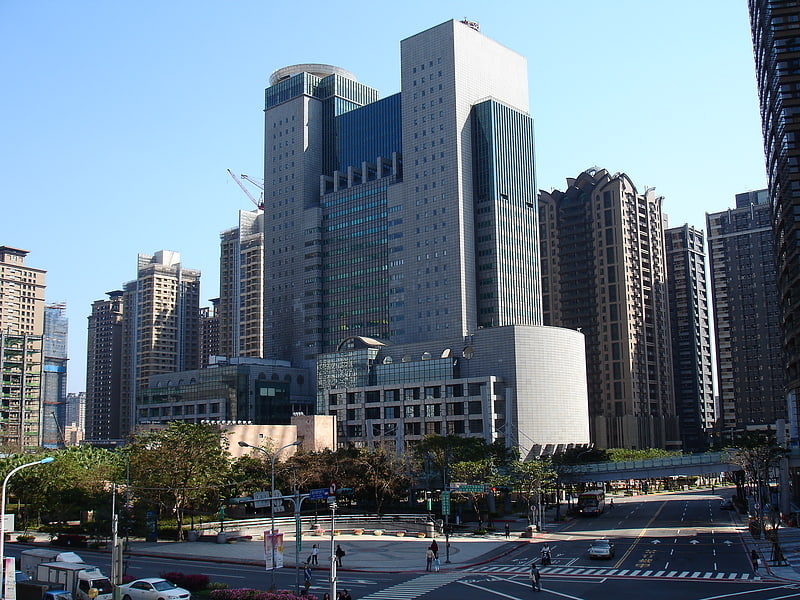
The New Taipei City Hall is the venue of the government of New Taipei City of the Republic of China. The hall is located in Banqiao District.[28]
Address: 161 中山路一段, New Taipei City
Yangmingshan National Park

Also known as: 陽明山國家公園
National park in Taiwan. Yangmingshan National Park is one of the nine national parks in Taiwan, located between Taipei and New Taipei City. The districts that house parts of the park grounds include Taipei's Beitou and Shilin Districts; and New Taipei's Wanli, Jinshan and Sanzhi Districts. The national park is known for its cherry blossoms, hot springs, sulfur deposits, fumaroles, venomous snakes, and hiking trails, including Taiwan's tallest dormant volcano, Qixing Mountain.[29]
Xiangshan

Also known as: 象山
Mountain in Taiwan. Xiangshan, also known as Elephant Mountain or Mount Elephant, is a mountain in Xinyi District, Taipei, Taiwan. It is close to the Taipei Metro Xiangshan Station. It is 183 m high and has a hiking trail about 1.5 km long. The Taipei 101 can be seen from the trail. The Six Giant Rocks are a tourist attraction in Xiangshan, and there are platforms for photographers.[30]
Discovery Center of Taipei
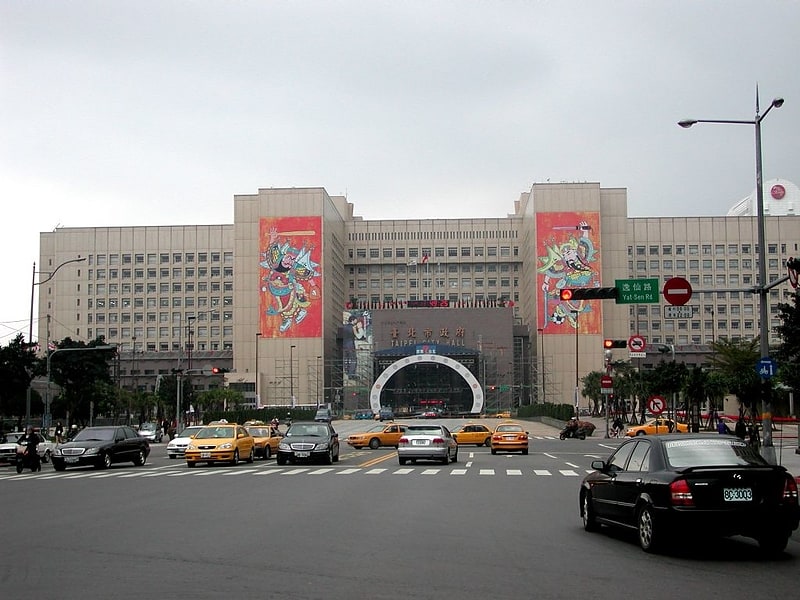
Also known as: 台北探索館
Museum in Taipei, Taiwan. The Discovery Center of Taipei is an educational center in Xinyi District, Taipei, Taiwan. The center is located at Taipei City Hall.[31]
Address: No. 1號, City Hall Rd, 110 Xinyi District (信义区)
Bangka Lungshan Temple
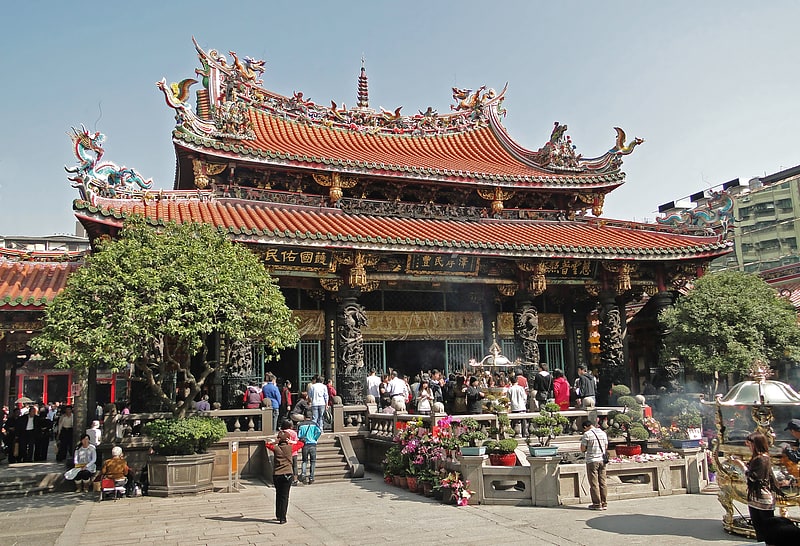
Temple in Taipei, Taiwan. Bangka Lungshan Temple is a Chinese folk religious temple in Wanhua District, Taipei, Taiwan. The temple was built in Taipei in 1738 by settlers from Fujian during Qing rule in honor of Guanyin. It served as a place of worship and a gathering place for the Chinese settlers. In addition to its Buddhist elements, it includes halls and altars to Chinese deities such as Mazu and Guan Yu.[32]
Address: No.211 Guangzhou Street,Wanhua District, 211 New Taipei City (万华区)
Zhinan Temple
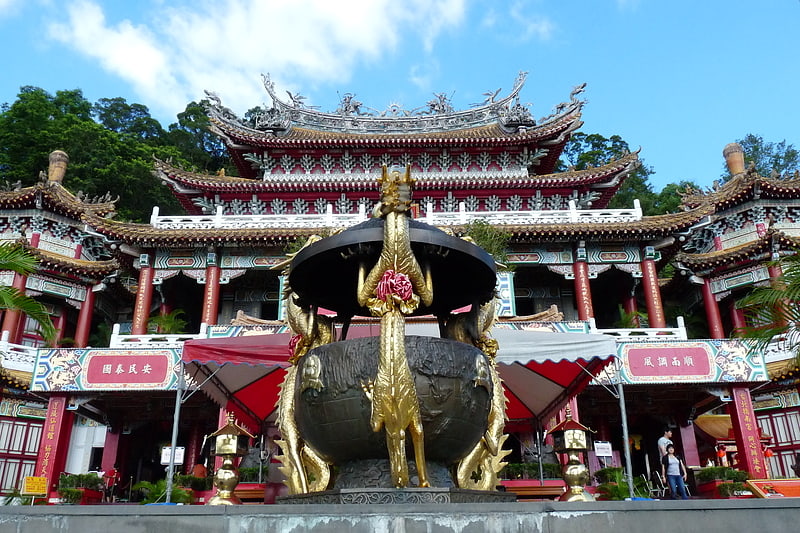
Also known as: 指南宮
Place of worship in Taipei, Taiwan. Zhinan Temple is a Taoist temple on the slopes of Houshan in Muzha, a suburb of Taipei, Taiwan. It was founded in 1882. The temple's main deity is Lü Dongbin, one of the Eight Immortals. As Lü is said to dwell in the southern courtyard of the heavenly court, the temple acts as a compass pointing toward the south; hence the name.[33]
Address: No.115 Wanshu Road, Wenshan District, New Taipei City (文山地区)
Presidential Office Building
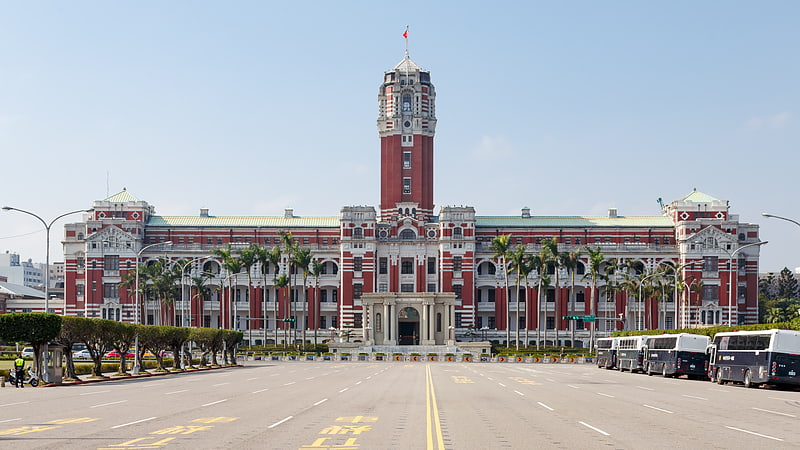
Also known as: 總統府
Building in Taipei, Taiwan. The Presidential Office Building is the work place of the President of the Republic of China on Taiwan. The building, located in the Zhongzheng District in the national capital — Taipei, was designed by architect Uheiji Nagano during the period of Japanese rule of Taiwan. The structure originally housed the Office of the Governor-General of Taiwan. Damaged in Allied bombing during World War II, the building was restored after the war by Chen Yi, the Governor-General of Taiwan Province. It became the Presidential Office in 1950 after the government of the Republic of China lost control of mainland China and relocated the nation's capital to Taipei at the end of the Chinese Civil War. At present, this Baroque-style building is a symbol of the Government and a famous historical landmark in downtown Taipei.[34]
Shilin Official Residence
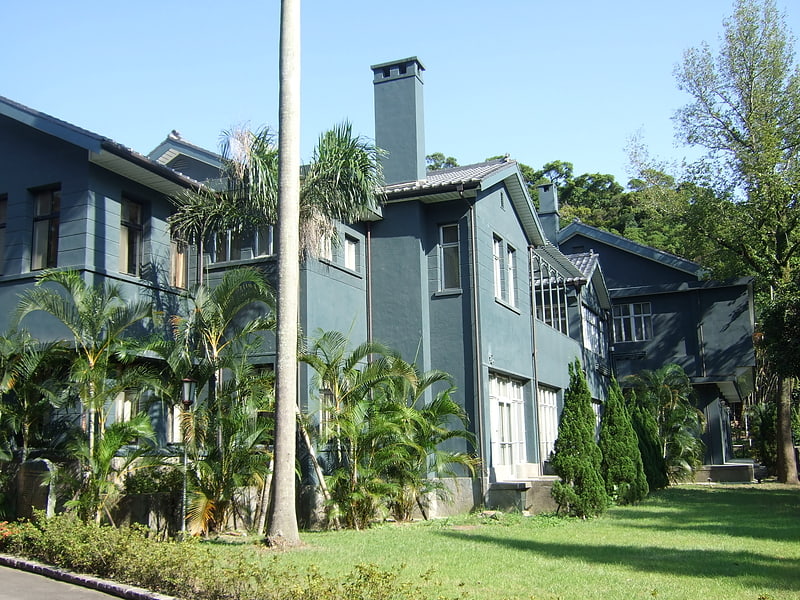
Also known as: 士林官邸
Heritage building in Taipei, Taiwan. The Shilin Official Residence is the former residence of late Republic of China President Chiang Kai-shek located on Zhongshan North Road in Shilin District, Taipei, Taiwan.[35]
Address: Sec. 5, Zhongshan N. Rd., Shilin Dist, New Taipei City (士林区)